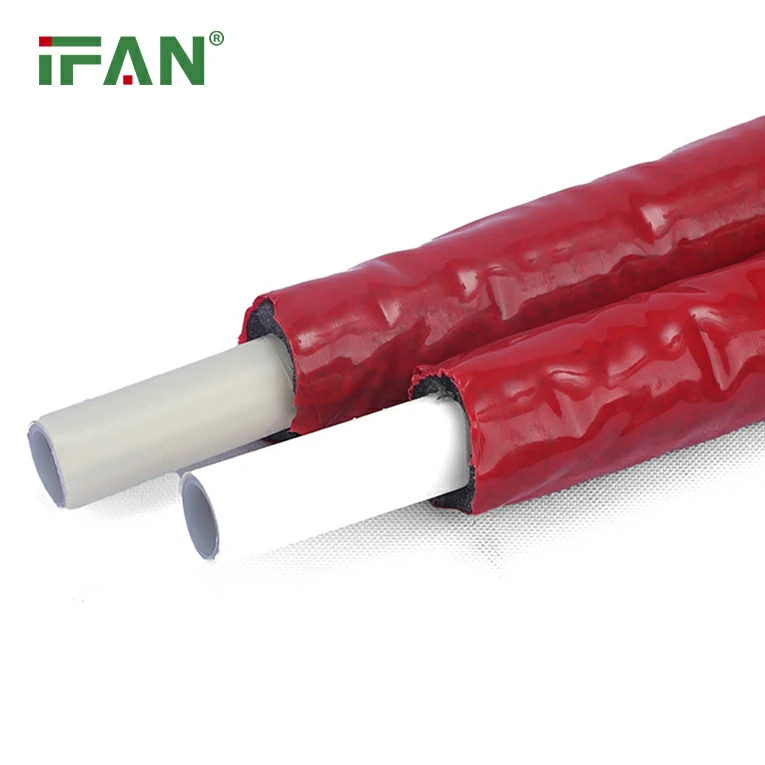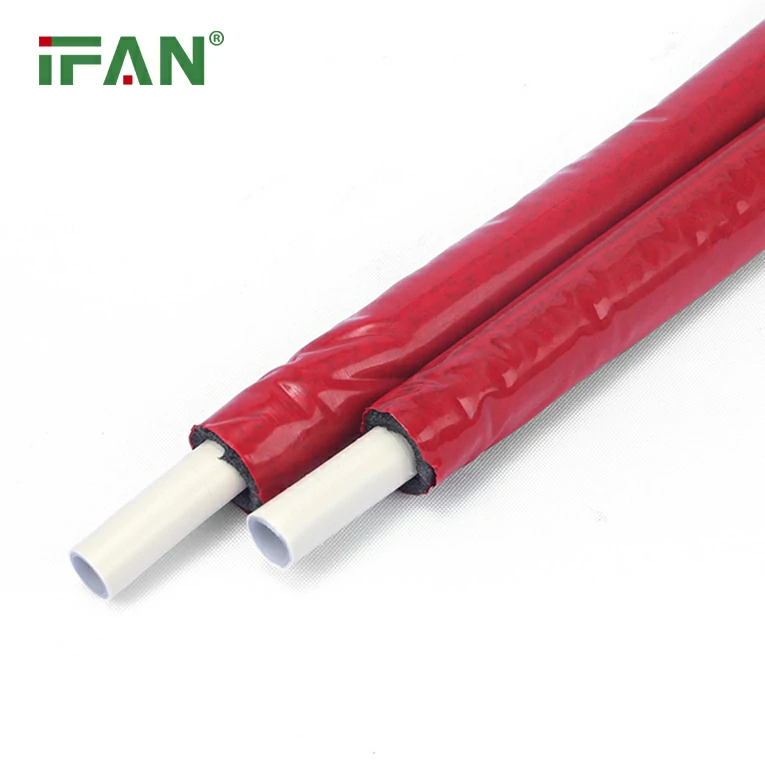Winter is here, and while many people are preparing for the cold in a variety of ways, few consider the potential risks to their plumbing system. Frozen pipes—particularly PEX pipes—are a common problem during the colder months. While PEX (cross-linked polyethylene) pipes are known for their flexibility and durability, they are not immune to the harsh effects of freezing temperatures. When water freezes inside the pipes, it expands, putting pressure on the pipe material and increasing the risk of ruptures, leaks, and costly water damage.
Fortunately, local plumbers are available to provide expert advice and help homeowners prevent frozen PEX pipes. In this article, we’ll share expert tips from a seasoned plumber on how to protect your PEX fittings and plumbing systems during the winter months. By understanding the causes of frozen pipes and implementing the right preventative measures, homeowners can reduce the likelihood of encountering plumbing issues during the winter.

Understanding the Risks of Frozen PEX Pipes
While PEX pipes have gained popularity in residential plumbing for their resistance to corrosion, flexibility, and ease of installation, they are still vulnerable to freezing. Frozen pipes can be a major headache for homeowners, and the risks associated with freezing water inside pipes are significant. Here’s why frozen PEX pipes can be problematic:
1. Pipe Ruptures
When water inside PEX pipes freezes, it expands and increases pressure inside the pipe. This pressure can cause the pipe to burst, leading to significant water damage when the ice melts. Although PEX pipes are more flexible than traditional materials like copper or PVC, they are not immune to bursting if the freezing is severe enough.
2. Water Damage
One of the most concerning issues with frozen PEX pipes is the potential for water damage. Once the ice inside the pipe melts, water will begin to flow. If the pipe is damaged or ruptured, water can leak into walls, floors, and ceilings, causing expensive repairs and possibly even the growth of mold.
3. Reduced Water Flow
Even if the pipe doesn’t burst, freezing can block the flow of water. This results in reduced water pressure or a complete loss of water in the affected area. Over time, this can affect the comfort and functionality of your home.
4. Mold and Mildew Growth
When frozen PEX pipes thaw and cause leaks, the resulting water can seep into areas of your home that are not immediately visible, such as behind walls or under floors. If left unchecked, this moisture can create the perfect environment for mold and mildew growth, further exacerbating the damage.
Key Tips from a Local Plumber on How to Prevent Frozen PEX Pipes
To avoid the hassle and potential destruction caused by frozen PEX pipes, local plumbers recommend taking proactive steps before the temperature drops too low. Here are some expert tips for preventing frozen PEX pipes:
1. Insulate Exposed Pipes
One of the most important steps in preventing frozen PEX pipes is to ensure that exposed pipes are well-insulated. This includes pipes located in areas such as attics, basements, crawl spaces, and exterior walls. Pipe insulation is readily available at most hardware stores and is easy to install yourself. Insulation helps to maintain the water temperature inside the pipe, reducing the risk of freezing. For the best protection, consider using foam pipe sleeves or fiberglass insulation for areas most exposed to the cold.
2. Seal Drafts and Gaps
Cold air can infiltrate your home and cause your PEX pipes to freeze, especially in spaces like basements, crawl spaces, and attics. Plumbers recommend sealing any drafts or gaps in these areas to prevent cold air from affecting your plumbing. Check around windows, doors, and vents to ensure they are properly sealed. You can use caulking or weather stripping to block cold air from entering your home and affecting your pipes.
3. Maintain a Consistent Temperature
Maintaining a consistent indoor temperature, especially in unheated or semi-heated spaces, is critical for protecting PEX pipes from freezing. Set your thermostat to at least 55°F (13°C) during the colder months, even when you’re not at home. This will help prevent sudden temperature drops in areas where pipes are located. For added protection, keep cabinet doors open in kitchens and bathrooms to allow warm air to circulate around pipes under sinks.
4. Allow Faucets to Drip
A local plumber’s recommendation to prevent frozen PEX pipes involves a simple trick: allowing faucets to drip. When temperatures are extremely low, allow a small stream of water to flow from faucets that are located on exterior walls or in unheated areas. This movement of water prevents stagnation and reduces the chances of the pipes freezing. The drip should be small, as it helps to keep the water circulating through the pipe and prevents ice buildup.
5. Use Heat Tape for Extra Protection
For homeowners in areas that experience extreme cold, heat tape (also called heat cables) can be a valuable investment. Heat tape wraps around PEX pipes and generates heat to keep the water inside from freezing. It’s ideal for especially vulnerable areas like attics, basements, or crawl spaces, where temperatures often drop below freezing. If you use heat tape, make sure to follow the manufacturer’s instructions carefully for safety and effectiveness.
6. Monitor the Weather
As a homeowner, staying informed about the weather forecast is key to preventing frozen PEX pipes. If an extreme cold snap is expected, take extra precautions by increasing your heating system or adding additional insulation to areas with exposed plumbing. By staying ahead of the weather, you can prevent emergencies before they happen.
7. Turn Off Outside Water Supply
Before the temperature drops too low, it’s a good idea to disconnect hoses from outdoor faucets and shut off the water supply to outdoor irrigation systems. Outdoor PEX fittings and pipes are especially vulnerable to freezing since they are exposed to the elements. Turning off the water supply to these systems helps to protect them from freezing and potential damage.
What to Do If Your PEX Pipes Freeze
Even with all of the preventive measures in place, it’s still possible for PEX pipes to freeze. If you suspect your PEX pipes have frozen, it’s important to act quickly to minimize damage. A local plumber typically follows these steps to resolve the issue:
1. Shut Off the Water Supply
The first thing you should do if you suspect a pipe has frozen is to shut off the main water supply to prevent water from flowing into the pipe. This can help avoid flooding and further damage once the ice thaws.
2. Locate the Frozen Pipe
Inspect your home to find the section of pipe that is frozen. Frozen pipes are often located in areas that are poorly insulated or exposed to the cold, such as under sinks, in crawl spaces, or along exterior walls. If you can access the frozen section of pipe, proceed carefully with thawing.
3. Thaw the Frozen Pipe
To thaw the pipe safely, use a hair dryer, space heater, or heat gun. Start from the faucet end and work your way back toward the frozen section. Apply heat gradually, and never use an open flame. If the pipe is hidden behind walls or insulation, it may be necessary to remove part of the drywall or insulation to access the frozen area.
4. Check for Leaks
Once the pipe has thawed, slowly turn the water supply back on and check for any leaks. If the pipe has cracked or ruptured, it will need to be repaired or replaced. It’s often a good idea to call a local plumber for repairs if you’re unsure of how to fix the damage.
Conclusion
While PEX pipes are more resistant to freezing than many other types of pipes, they are not immune to the effects of extreme cold. As a homeowner, taking the necessary steps to prevent frozen PEX pipes will help protect your plumbing system from damage and avoid costly repairs. Insulating pipes, sealing drafts, maintaining a consistent temperature, and using heat tape are all practical measures to reduce the risk of freezing.
By following these expert tips from a local plumber, you can ensure that your plumbing remains functional throughout the coldest months of the year.
Frequently Asked Questions (FAQs)
1. How do I know if my PEX pipes are frozen?
Signs that your PEX pipes may be frozen include reduced or no water flow from faucets, visible frost on pipes, or water leaks once the ice thaws. If you suspect freezing, turn off the water supply and carefully inspect your pipes.
2. Can PEX pipes freeze and burst?
Yes, PEX pipes can freeze and burst if exposed to very low temperatures for an extended period. While PEX is more flexible than rigid pipes, the water inside the pipe can still expand and cause damage.
3. What’s the best way to prevent PEX pipes from freezing?
Insulating pipes, sealing gaps and drafts, keeping the heat on, allowing faucets to drip, and using heat tape are the best ways to prevent PEX pipes from freezing during the winter months.
4. Is heat tape safe for PEX pipes?
Yes, heat tape is safe for PEX pipes when used according to the manufacturer’s instructions. It provides additional heat to prevent freezing, especially in vulnerable areas like basements and attics.
5. Should I call a plumber if my PEX pipes freeze?
If your PEX pipes freeze and you cannot thaw them safely, or if there is significant damage, it’s recommended to call a local plumber for assistance. They can assess the






